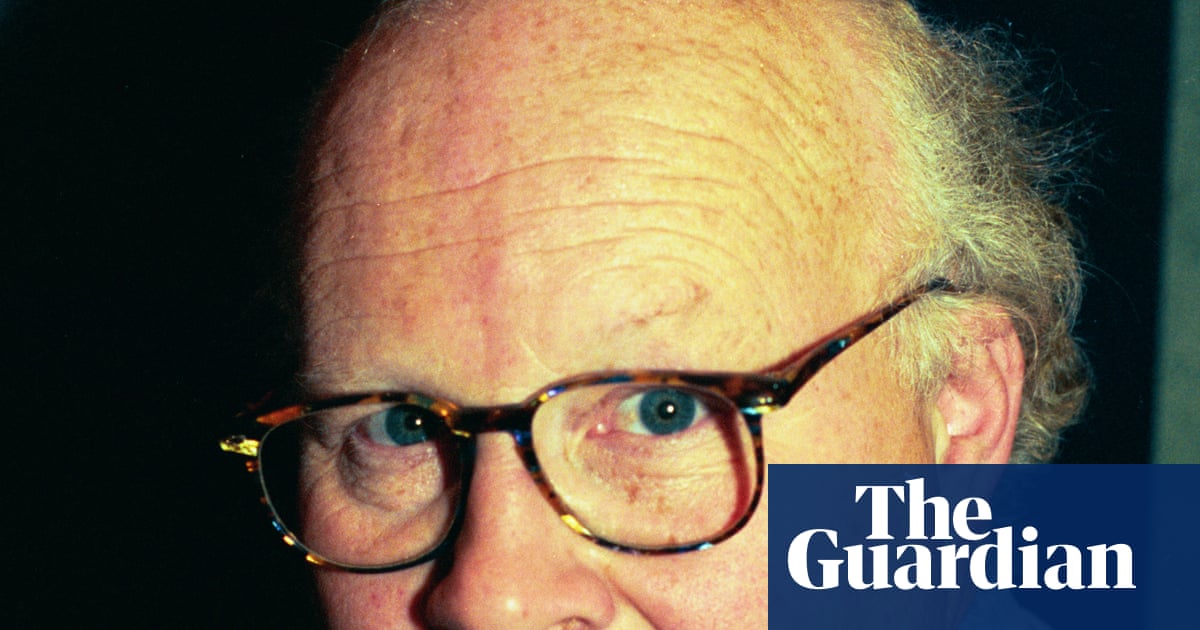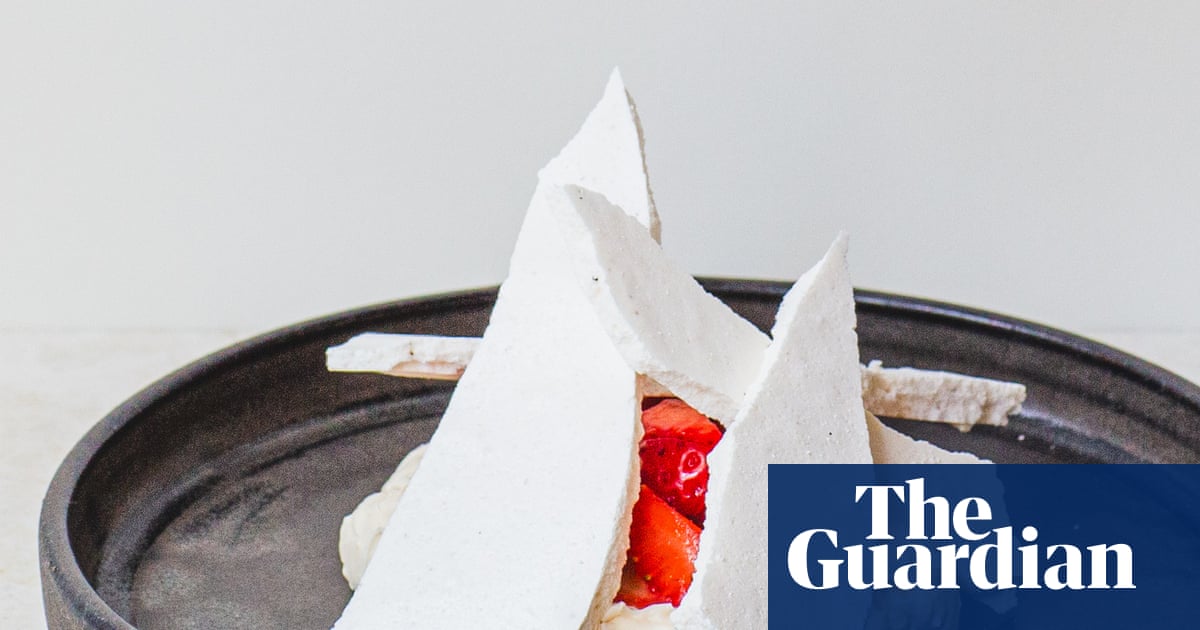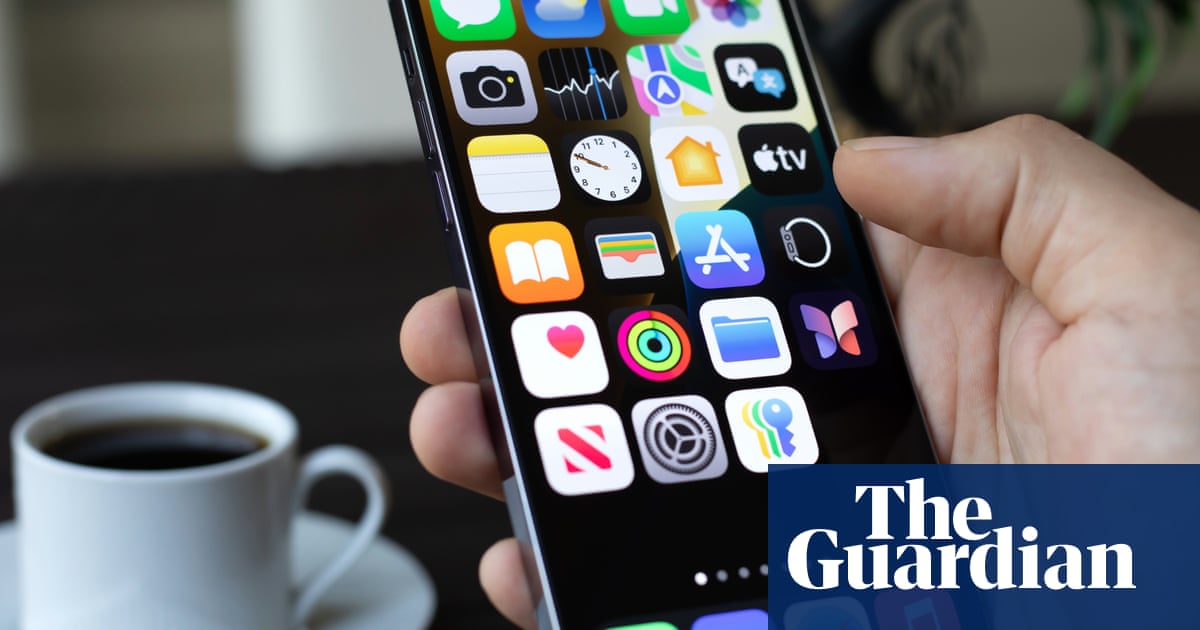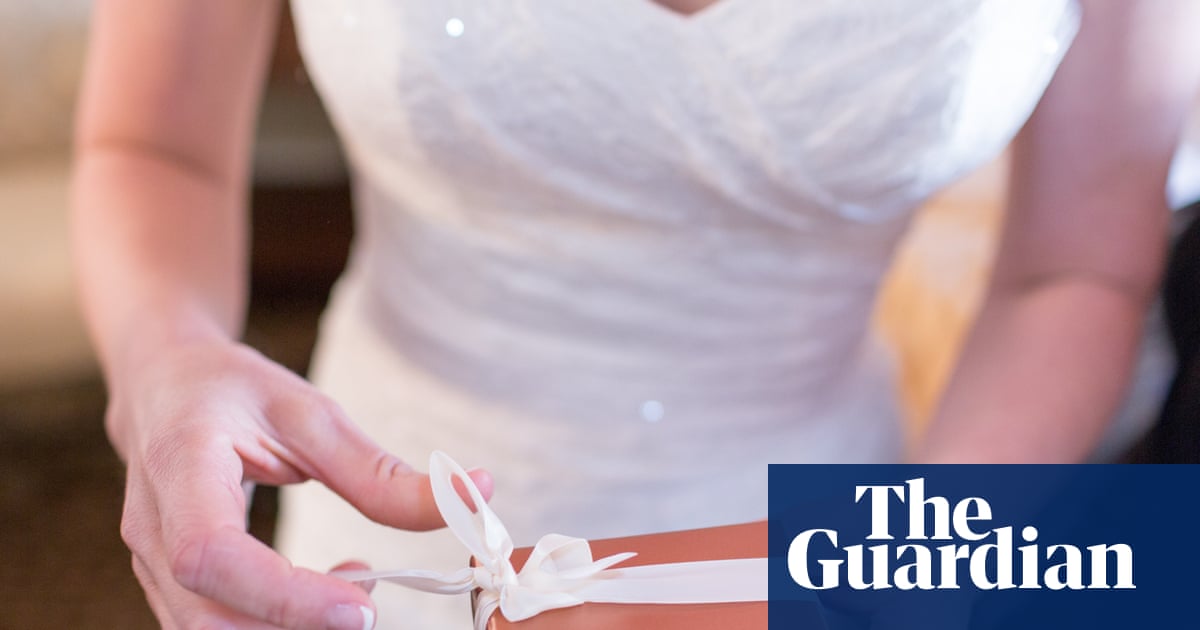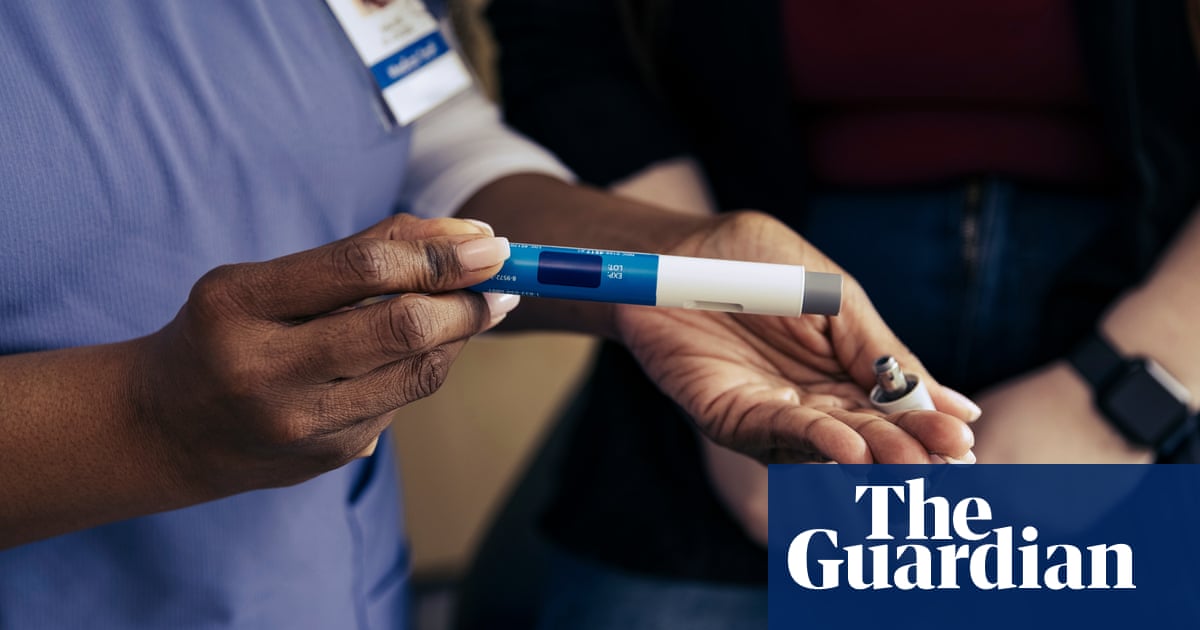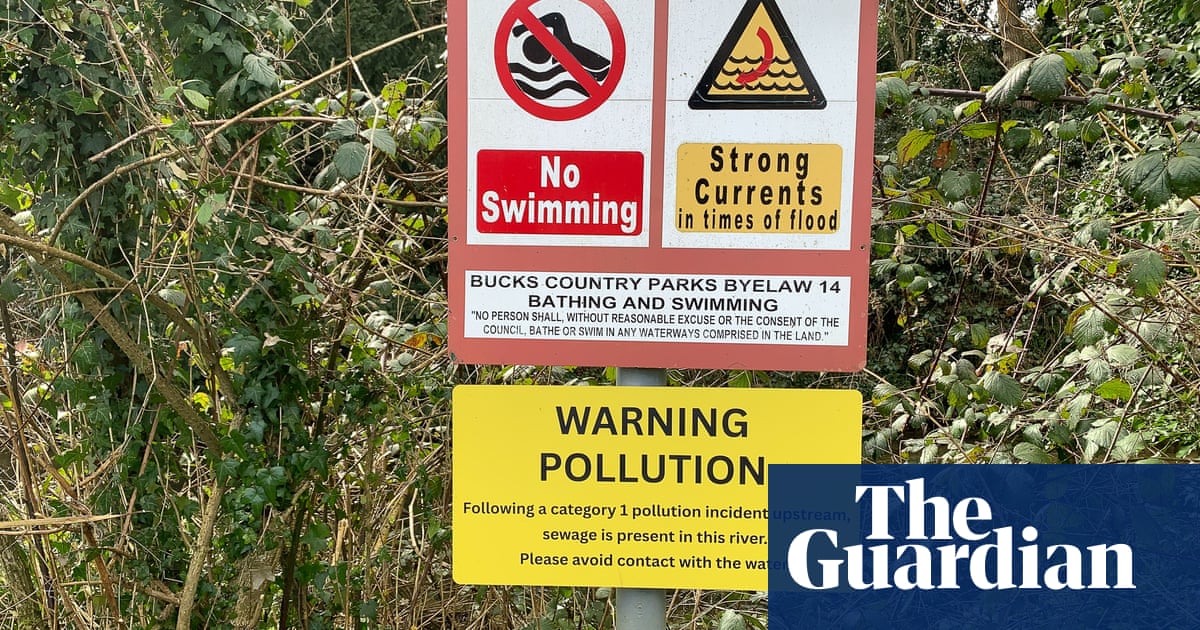LED face masks are booming in popularity – despite being one of the most expensive at-home beauty products ever to hit the market. Many masks are available, each claiming to either reduce the appearance of fine lines, stop spots or calm redness. Some even combine different types of light to enhance the benefits.
But it’s wise to be sceptical about new treatments that are costly and non-invasive, and to do your research before you buy. With this in mind, I spoke with doctors and dermatologists to find out whether these light therapy devices actually work.
They’re not a miracle cure for deep-set wrinkles, but experts say the best light therapy masks can promote collagen production, improve elasticity and help smooth skin with sustained use. And while it might seem like a new technology, research dating back to the 90s shows the efficacy of light therapy in wound healing, acne treatment and skin rejuvenation.
Red and infrared light are safe to use on all skin types, but be warned that blue light can worsen hyperpigmentation on darker skin tones.
I’ve tested some of the most popular devices on the market – including infrared masks – to narrow down my favourite LED face masks for treating a range of skin concerns.
At a glance
-
Best LED face mask overall:
CurrentBody Series 2
-
Best budget LED face mask:
Silk’n facial
-
Best for targeting multiple skin concerns:
Shark CryoGlow
-
Best LED device for acne-prone skin:
Lustre ClearSkin Solo
Why you should trust me
I’ve been reviewing health and beauty tech for the past four years. During this time I’ve witnessed many beauty fads come and go. Naturally tight-fisted and a bit of a sceptic, I was initially struck by the cost of these masks. How on earth can an elaborate LED light strip set you back over £300?
But after testing multiple light therapy masks, I’ve come to understand the technology behind them, and sadly you won’t be able to engineer your own light therapy system with a costume mask and a set of LED string lights.
I don’t have many fine lines or wrinkles to test on, but I can comment on how blue light treatment affects acne because I’ve suffered from it since I was a teenager – despite my mum’s assurances that it would clear up after puberty. The experts I spoke to agreed on the efficacy of red and infrared light for anti-ageing.
Are LED face masks actually worth it?
Light therapy masks are fantastic additions to a skincare routine, helping to smooth, firm and reduce blemishes. Since I started using one almost a year ago, my skin is calmer, less prone to redness, and has a more even tone.
However, LED masks can be expensive, and if you’re not disciplined enough to use one regularly, you won’t see results. Before you jump in and splash between £100 and £400, keep in mind that light therapy masks are most effective when paired with a good skincare routine. It’s crucial to make sure skin is properly cleansed before treatment and protected from sun damage afterwards.
If you don’t already have a skincare routine nailed down, don’t buy a light therapy mask just yet. Consider starting out using a gentle cleanser and moisturiser, with an SPF for daytime. You could also incorporate targeted skincare serums, such as retinol and vitamin C, to help firm and brighten the skin without the need for an expensive light therapy mask.
How I tested
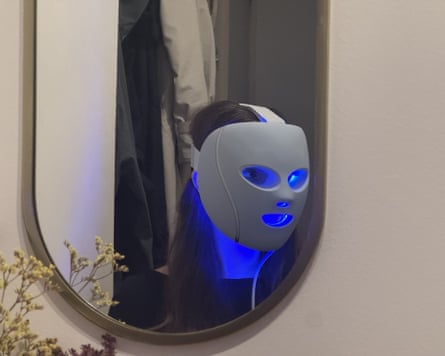
Since LED treatments take a while to show visible results, it’s difficult to test multiple light therapy masks at once (at least, without spending a few years testing them), so I enlisted the help of expert dermatologists who were familiar with light therapy treatments long before they were commercially available.
I spoke with Dr Barbara Kubicka, an expert in aesthetic medicine; Dr Derrick Phillips, a consultant dermatologist and spokesperson for the British Skin Foundation; and aesthetic doctor Dr Priya Verma, an authority on the science of skin ageing.
I asked the experts to identify which features of a light therapy mask – such as bulb quality and quantity, light wavelength and treatment time – matter the most, to inform my choices. They also outlined the suitability of light therapy for different skin types and its associated risks.
Armed with their advice, I tested the fit, comfort levels and usability of 10 of the most popular light therapy masks and other targeted LED devices. Getting hands on with the masks allowed me to pinpoint any of the key features the experts recommended, as well as useful features I found helpful as a consumer.
I’ve been using a light therapy mask regularly for the past 12 months, so I can identify a good mask from a bad. My tests also included monitoring how well the treatments worked after four nightly sessions, with the obvious caveat that only very minimal results could be observed after such a short-term treatment. I then tested my favourite masks over several months, too, helping me to verify any unique treatment claims – as well as giving me plenty of opportunities to scare my boyfriend by sneaking up on him wearing each one.
Only masks that use the brightest, flicker-free bulbs, fit comfortably and are easy to use made the final cut. After testing, I returned the masks sourced for this article to the manufacturers. Where that wasn’t possible, I cleaned the masks and donated them to the Redbridge Reach Out service, a local charity that supports anyone experiencing domestic abuse.
The best LED face masks in 2025
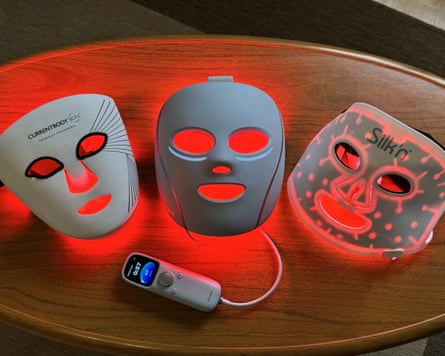
Best LED face mask overall:
CurrentBody Series 2
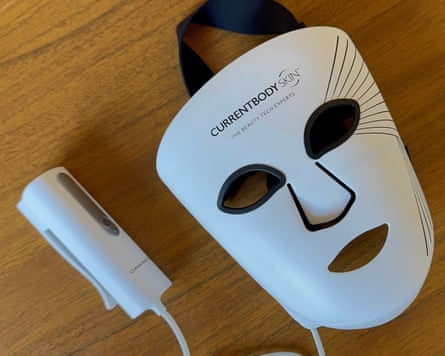
This is the second red light therapy mask from CurrentBody, and it’s easily the brightest and best-fitting mask I’ve tested. If you want the most powerful red light mask money can buy, I believe this is worth the cost.
The mask has 236 LED bulbs that blend red, near-infrared and deep near-infrared light, the latter of which is exclusive to the Series 2 mask. The original mask, which is £100 cheaper, has only the former two light frequencies.
The deep near-infrared lights penetrate deeper than the other two types of light, CurrentBody claims. This leads to more effective treatment where it’s needed most – the deep near-infrared bulbs are positioned under the eyes and around the lips to better target areas where ageing is more pronounced. Add surface-level red light and near-infrared light, and you’ve got a face mask that works harder than most.
Why we love it
I loved how simple the mask was to use. After attaching it to my head using the adjustable straps, I turned on the mask to activate a 10-minute treatment. It offered brilliant facial coverage, wrapping all the way under my chin. And its eye guards were highly effective, blocking any glare from the bright lights and allowing me to continue doing my daily activities – or endlessly scrolling – while wearing the mask.
I used this mask for three months, and was pleased to notice my skin tone looking calmer and more even than usual, with less undereye inflammation. As it’s a red light mask, it didn’t have much effect on my acne, but it did help to reduce redness.
If you have blemish-prone skin, CurrentBody does sell a blue light mask for the same price. It has the same comfortable, high-coverage fit and high-quality bulbs, but uses blue and red bulbs (slightly fewer: 220) to target acne-causing bacteria and reduce inflammation.
It’s a shame that … the mask offers only one treatment setting and there isn’t a screen displaying the treatment time. Neither is a dealbreaker, but it’s nice to be able to choose different treatments, and almost every other mask includes a countdown timer.
Number of LEDs: 236
Number of settings: one
Treatment time: 10mins
Light frequencies: red (633nm), near-infrared (830nm), deep near-infrared (1,072nm)
Timer countdown: no
Best budget LED face mask:
Silk’n facial
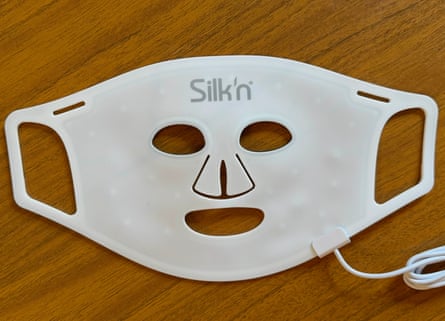
If you want to try light therapy without remortgaging the house, the Silk’n facial LED mask is a good choice. It has 100 LED bulbs with good facial coverage, is comfortable to wear and offers a good range of light colours. It doesn’t have near-infrared lights like the pricier options, but it covers the basics at a decent price.
Why we love it
This mask offers four colour modes: red, blue, yellow and purple. Red light helps stimulate collagen to reduce the appearance of fine lines, while blue light helps to soothe breakouts. The purple light comes from mixing the aforementioned blue and red lights, combining the effects of both to boost the skin’s overall evenness.
Although less widely researched (and with limited clinical evidence to suggest efficacy), the experts I spoke to said the yellow light treatment could help improve hydration levels in the skin. I didn’t notice a huge hydration hit when testing this feature, so if your skin is crying out for hydration, I recommend using the other light settings alongside a hydrating serum.
Each colour can be selected individually for a 10-minute targeted session, or you can select automatic mode, which cycles through the colours over 15 minutes to provide all the benefits at once.
I found the Silk’n light therapy mask simple to use and comfortable to wear. Its flexible silicone build didn’t feel quite as sturdy as more expensive options, but I didn’t really notice this when using the mask. The built-in eye shields weren’t as bulky as others, but they still blocked out the light and protected my eyes well.
The automatic mode left my skin feeling completely comfortable, with a slightly glowier finish than usual – just what I’d expect from an entry-level mask like this one.
It’s a shame that … there’s no timer and it has fewer than half the bulbs of the CurrentBody, with no near-infrared light treatment for effective collagen stimulation deeper in the skin. This means it’s better for light-touch anti-ageing, and for soothing, acne-busting blue light treatments.
Number of LEDs: 100
Number of settings: 5
Treatment time: 10 or 15mins
Light frequencies: red (633nm), purple (463-633nm), blue (463nm), yellow (592nm)
Timer countdown: no
Best for targeting multiple skin concerns:
Shark CryoGlow

Many will be familiar with Shark’s vacuum cleaners and hair-styling gadgets, but the brand’s latest venture is in skincare. The Shark CryoGlow is the only LED face mask to offer built-in undereye cooling alongside targeted light therapy for anti-ageing and acne repair.
Why we love it
The CryoGlow offers three different wavelengths of light: blue, red and deep-infrared. It has three presets for “better ageing”, “blemish repair” and “skin sustain”. If these aren’t clear enough, the control screen explains exactly what each mode is designed to do, making it really user-friendly.
I found the lights incredibly bright during my tests – though for safety they automatically dim when you remove the mask from your face – but I was happy with how the mask shielded my eyes.
During every treatment, you can choose to switch on the cooling undereye patches, which aim to de-puff and soothe your skin. The cooling can also be used on its own, without the LEDs. There are three levels, the coolest of which felt startlingly cold at first but did a great job of calming down my eyes on a particularly bad hay fever day. Likewise, the blemish mode did a brilliant job of calming spots and redness with sustained use. I also liked using the skin sustain mode for a quick pick-me-up to brighten my skin before a night out.
As you might imagine, using the cooling feature on full blast drains the battery more quickly. I performed two battery-rundown tests on the CryoGlow without cooling, and it managed 17 treatments. With maximum cooling enabled, however, this dropped to just seven. That’s still a decent number of treatments in between charges, but it’s something to bear in mind.
It’s a shame that … since it’s made of plastic, it’s noticeably heavier than its silicone competitors. Thankfully, Shark has made the mask fit comfortably by using cushioned inserts at the forehead, brow and nose area.
That’s when you’re sitting up, at least; when lying down, the metal cooling patches pressed into the delicate area under my eyes. Another unfortunate side-effect of the cooling is the whirring noise it makes – inaudible from far away, but pretty noisy when pressed on to your face.
Number of LEDs: 160
Number of settings: four
Treatment time: 4-8mins light therapy; 5-15mins under-eye cooling
Light frequencies: red (630nm), infrared light (830nm), blue light (415nm)
Timer countdown: yes
Best LED device for acne-prone skin:
Lustre ClearSkin Solo
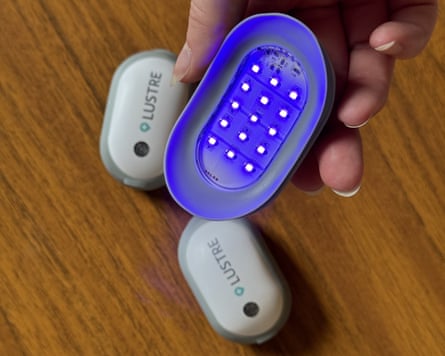
Acne can be a real pain, and many cosmetic treatments that target it leave skin feeling irritated, dry and flaky. These nifty adhesive LED patches from Lustre use blue light, which the company claims reduces acne-causing bacteria.
Why we love it
Each Solo patch has 15 pure blue LEDs at the proven wavelength for treating acne, 415nm. The patches cover a targeted area of skin about 2.5 x 5cm, which is perfect for treating problem areas such as the chin, cheeks and forehead. Since they’re rechargeable and far smaller than a typical LED face mask, they’re highly portable, making it easy to stay consistent with treatments wherever you are.
I found the targeted treatments very effective for minimising breakouts in my chin area – somewhere I often struggle with spots. My skin was also quicker to heal, with fewer breakouts, the longer I continued with treatments.
after newsletter promotion
The patches come with a supply of double-sided adhesive to fix each one to your skin, allowing you to move around freely during treatment. This also means, unlike typical light therapy masks, they can be safely fixed anywhere on the body.
If you’re worried that the adhesive will feel uncomfortable or be tricky to remove from breakouts, don’t be. The patches are so lightweight that the adhesive doesn’t need to be very strong. I found it easy and comfortable to peel off the patches after the recommended 20-minute treatment time.
It’s a shame that … you need to buy the sticky patches when they run out. These cost £18 for a pack of 60, or 30p each. They also look a bit like leeches – only you can decide if that’s more palatable than the Hannibal Lecter look of the full-face LED masks.
Number of LEDs: 15
Number of settings: one
Treatment time: 20mins
Light frequencies: blue (415nm)
Timer countdown: no
The best of the rest

Zkin light therapy mask
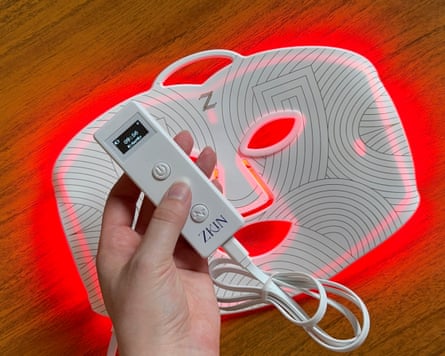
Best for: anti-blemish and anti-ageing in a flexible mask
If the Shark CryoGlow listed above tempts you but you don’t want to use the noisy cooling patches, this mask from Zkin is a brilliant alternative. You may not recognise the brand, but it’s the brainchild of medical consultant Dr Ifeoma Ejikeme.
The mask comes with the most widely researched red, blue and near-infrared light, with three modes: red, blue and combination. Whichever you choose, the mask uses near-infrared light to stimulate repair below the skin’s surface and boost circulation. Since it’s made from flexible silicone with removable eye inserts, I found it very comfortable to wear during testing.
It didn’t make the final cut because … it’s pretty expensive. You’d be better off buying the CurrentBody mask if you’re after very powerful red light treatment and coverage. It also has fewer bulbs than masks of a similar price.
Number of LEDs: 122; number of settings: three; treatment time: 10mins; light frequencies: blue (460nm), red (630nm and 660nm), and near-infrared (850nm); timer countdown: yes
Flikeze PhotonMask Quint
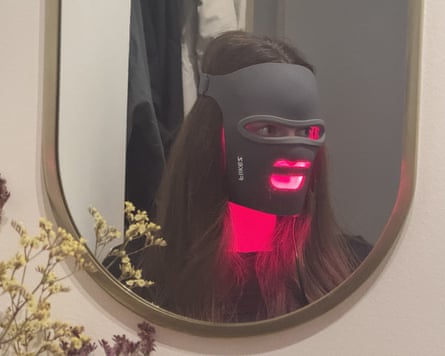
Best for: a comfortable fit
The Flikeze light therapy mask offers a wide range of light colours: red, near-infrared, blue, green and yellow. Its settings include anti-ageing (red light), repair (yellow), brightening (green) and acne care (blue and red), and you can choose to do a 10- or 15-minute treatment. These all use near-infrared rather than deep infrared light.
The best thing about this mask is how comfortable it is. It has two straps that wrap around the top and bottom of your head, holding it to your face without the mask ever feeling weighty or digging in. Its eye shades fit like diving goggles and kept my eyes completely shaded from light during treatment (you can see how little light leakage there is in the haunting photograph from testing).
It didn’t make the final cut because … for the cost, it has fewer bulbs than average and the bulbs don’t cover the bridge of your nose – not a likely problem area for wrinkles, but spots can be a problem there. It also looks particularly disconcerting when worn.
Number of LEDs: 92; number of settings: four; treatment time: 10-15mins; light frequencies: red (660nm), near-infrared (850nm), blue (415nm), green (532nm), yellow (590nm); timer countdown: yes
Lustre ClearSkin Renew Pro Facewear
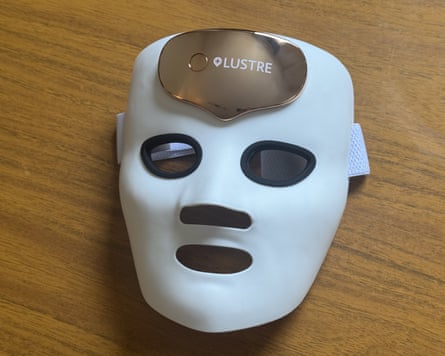
Best for: wireless controls and customised treatment
Most light treatment masks have wired controls. That doesn’t mean you need to remain tethered to a single spot, but it does mean there’s a remote that you have to carry around with you. This mask from Lustre, on the other hand, is controlled via a mobile app.
It has two programmes, called Energise and Revitalise, and uses blue, red and near-infrared light. Unusually, you can choose which kind of light you want to use in four areas of your face: forehead, eyes, nose, cheeks and chin. In my tests, I liked being able to treat spots on my chin with blue light while using red light on the rest of my face.
It didn’t make the final cut because … it’s not very comfortable. Since the battery is on the mask itself, it’s a little top heavy, and the eye protectors don’t do a great job of shielding your eyes. I also hate having lots of apps on my phone – it’s up to you whether the wireless freedom is worth the app installation.
Number of LEDs: 80; number of settings: two presets, with in-app personalisation options across five facial zones; treatment time: 10mins; light frequencies: red light (630nm), near-infrared light (830nm), blue light (415nm); timer countdown: yes
Silk’n LumiLips LED lip mask

Best for: targeted lip treatments
If your main area of concern is the lip area, you might not need to buy a full mask. The Silk’n LumiLips has 30 LEDs concentrated in the lip area, covering smile lines and the chin. It has five light frequencies – amber, red, dark red, near-infrared and deep near-infrared. The only other mask on this roundup offering deep near-infrared light is the CurrentBody 2 mask, which gives you a good idea of how much value it offers.
The mask has two modes, both of which use dark red, near-infrared and deep near-infrared light. The red-light mode claims to promote lip volume and firmness, while the second mode adds in amber light to reduce pigmentation and redness. I love that the mask requires only a five-minute daily treatment, making its less-than-comfortable mouthpiece slightly more bearable.
It didn’t make the final cut because … it’s built like an adult pacifier and feels like one too. You have to bite down on the mouthpiece to keep it in place, which is far less comfortable than just wearing a mask with a strap around your head.
Number of LEDs: 30; number of settings: two; treatment time: 5mins; light frequencies: amber (605nm), red (633nm), dark red (660nm), near-infrared (830nm), deep near-infrared (1,072nm); timer countdown: no
What you need to know

What is LED therapy, and how does it work?
“LED (light-emitting diode) therapy is a non-invasive treatment that uses specific wavelengths of light to stimulate various cellular processes in the skin,” says aesthetic medicine expert Kubicka. “Depending on the colour or wavelength, LED light can target inflammation, promote collagen production, accelerate healing and even kill bacteria.”
Light therapy is a great addition to your skincare routine – for me, it’s helped reduce breakouts, improve healing and reduce the appearance of my acne scars. LED face masks are quick, gentle and non-invasive, and suitable for most skin types (although as mentioned above, blue light can worsen hyperpigmentation on darker skin tones, according to the experts I spoke with). The masks are effective and foolproof to use, and the daily treatments also force you to take a little time for yourself – perfect for a morning pick-me-up or an evening wind-down.
Does red light help with anti-ageing?
“Red-light therapy can reduce the appearance of fine lines and wrinkles through a process called photobiomodulation,” says consultant dermatologist Phillips. “It energises mitochondria, which are the batteries of the cells, powering the production of collagen and elastin by fibroblasts, the factories of the skin.”
Elastin and collagen are “the building blocks of firm, youthful skin”, says Kubicka. Stimulating the production of these molecules can “improve skin density, elasticity and overall smoothness” as long as you complete treatments regularly.
I have yet to develop fine lines or wrinkles, but I’m keen to avoid them by using red-light therapy for “preventive ageing”. However, “most of the clinical evidence focuses on treating visible signs of ageing or repairing damaged skin, rather than long-term prevention in younger skin,” as aesthetic doctor Verma explains.
Still, Verma reassured me my efforts wouldn’t be in vain. “Using LED light consistently and appropriately may help support overall skin health […] especially when combined with sun protection and a good skincare routine.”
What different colours of light therapy are available?
Several colours are available, with each wavelength claiming to target a different skin concern. These colours correlate to the visible light spectrum, and each can have a different effect on the skin.
Red light has a wavelength of between 630 and 700nm and is the most widely known form of light therapy, loved for its non-invasive potential anti-ageing benefits. Near-infrared light above 700nm “penetrates the skin more deeply to support tissue repair and reduce inflammation”, according to Kubicka. Blue light therapy (415nm), on the other hand, has been proven to target acne-causing bacteria, leading to a reduction in breakouts over time. Kubicka also says blue light can help regulate oil production – another common problem for those with acne.
The effect of some types of light on the skin are better researched than others. Near-infrared, red light and blue light are backed by scientific studies that identify the biological processes that each type of light triggers in the body.
Meanwhile, research into green and yellow light is more limited. One study questions the efficacy of yellow light therapy and claims that a previous study may have been influenced by the placebo effect. Similarly, a study on green light therapy suggests that more research is needed to provide a solid recommendation for use as an anti-ageing treatment.
How and when would you recommend using light therapy?
The “how” is simple: always use light therapy masks on freshly washed, dry skin, before applying serums and creams. This will give the light the most direct access to the skin.
Despite what some instruction manuals advise, don’t jump into daily treatments straight away – you may end up with slightly irritated skin. Start by introducing treatments two to three times a week, and monitoring the impact on your skin. If you don’t notice any sensitivity, you can incorporate more treatments, if permitted by the manufacturer’s guidelines.
Once your skin is used to the treatment, “home devices should be used three to five times a week, for 10-20 minutes a session,” says Phillips. Don’t expect instant results, though. If you’re hoping to treat breakouts, you should “see a reduction in redness and the frequency of acne breakouts within two to four weeks”. Those using red light for anti-ageing benefits will need to wait a little longer: “It typically takes six to eight weeks to see visible changes.”
Is light therapy safe for all skin tones?
“LED light therapy is generally very safe when used correctly,” says Verma. This is because, unlike laser hair removal, it only uses low-level, non-thermal light. “The most common side effects are mild and temporary, such as slight redness, dryness or irritation.”
“People with known photosensitive disorders or taking medications that make them more sensitive to light (eg certain antibiotics) should consult their doctor,” says Phillips. He also warns that those with darker skin tones should exercise caution when using blue light, since “some blue wavelengths have been associated with hyperpigmentation”. The Lustre ClearSkin Solo patches recommended above offer exclusively blue light, but the other masks on this roundup have blue-light-free settings if you do find that it causes sensitivity.
How much should I spend on an LED therapy mask?
There are hundreds of light therapy masks available at different prices, but the quality varies wildly. You may see results from a budget-friendly mask, such as the £100 Silk’n mask, but spending more will generally get you a larger quantity of bulbs that offer a greater range of wavelengths. You’re also more likely to get a mask with a better fit and coverage.
The best mask for you will depend on your skin concerns and budget. Those hoping to invest in a mask with anti-acne properties will be able to spend less, since blue light is more widely available, but if you’re looking for the best anti-ageing deep near-infrared light therapy, you will need to part with more cash.
High-end red light therapy masks can cost up to £500; if you spend that much, just make sure you use it regularly, or you won’t see results.
Sarah Matthews is a consumer journalist who specialises in health and beauty reviews. In her four years of product testing, she’s worked her way through countless hair styling tools, hair removal, light therapy and skincare innovations. She’s seen beauty trends come and go, and can sniff out a fad from a gamechanger (that doesn’t mean she’s disciplined enough to always follow her own advice, though)

.png) 1 month ago
37
1 month ago
37

